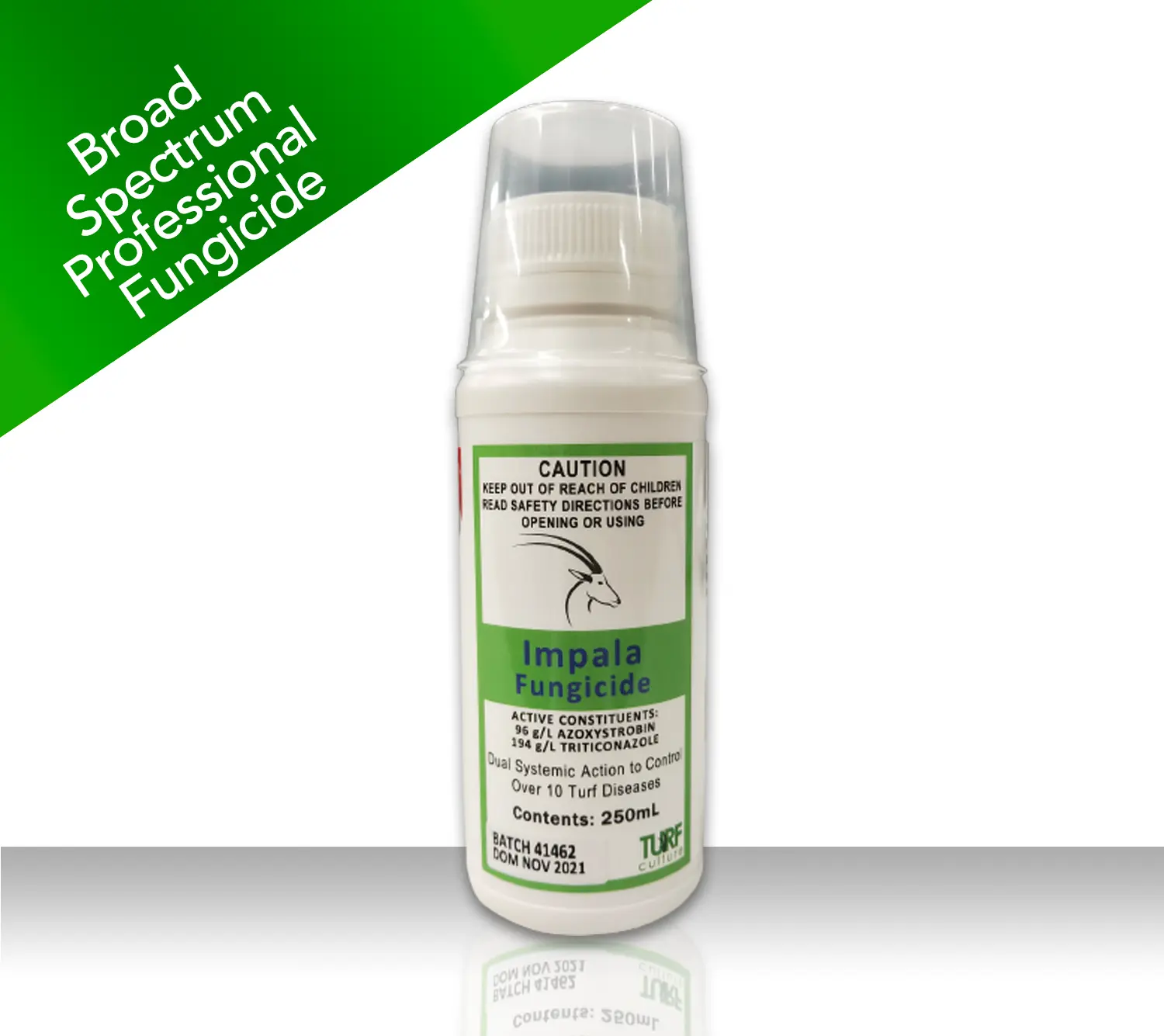As the warm weather fades and we head into the cooler months, it’s time to shift how we care for our lawns. While the growth may slow, your lawn is still very much alive—and susceptible to challenges like fungal disease, pests, and excess moisture. With a few seasonal adjustments, you can keep your grass strong, healthy, and ready to bounce back next spring.
Here’s your autumn-to-winter lawn checklist, along with the products we recommend to keep things in peak shape!
1. Watch for Lawn Disease
Cooler temperatures combined with morning dew and reduced sunlight make your lawn more susceptible to fungal diseases like dollar spot, brown patch, and leaf spots. These diseases love moist, shaded environments and can spread fast if left untreated.
Tip: If you start seeing discoloured patches or fuzzy growth on the blades, don’t wait. Treat quickly with a broad-spectrum fungicide like Impala, which contains two powerful active ingredients to knock down the disease and protect new growth.
Want to go a step further? Add Lawnganics Vitalise to the mix—this biological plant health booster helps your lawn recover from stress and disease and activates its natural defence systems.
2. Stay Alert for Armyworm
Armyworms are still active in early autumn, and a warm start to the season can extend their feeding window. These pests are fast and destructive, often chewing through large patches of grass overnight.
Signs of armyworm:
-
Grass that looks scalped or stripped
-
Birds feeding aggressively on your lawn
-
A sudden brown patch appearing almost overnight
Solution: Use Acelepryn granular or liquid as a knockdown and future preventative treatment.
3. Switch to Foliar Feeding
As the soil cools down, the roots slow down their uptake of granular nutrients. This is the time to switch to foliar feeding—applying nutrients directly to the leaf for faster absorption and visible results.
Try LawnPlay Enhance or LawnPlay Curator, depending on your lawn’s needs:
-
Enhance is perfect for a gentle nitrogen hit plus extra greening nutrition.
-
Curator gives your lawn an extra edge with a full NPK blend.
Apply with a backpack or knapsack sprayer in the morning when dew has lifted and there’s no rain forecast.
4. Trim Back Overhanging Branches
Shorter days mean your lawn gets less sunlight—and shade-loving fungi love that. If your lawn sits under deciduous trees or near shrubs, now is a great time to trim them back to improve air circulation and light penetration.
Trimming also reduces the amount of leaf litter falling on the lawn, which can trap moisture and harbour pests and diseases.
5. Remove Dew in the Morning
Morning dew sits on your lawn for longer during the cooler months, creating a damp microclimate that fungal spores thrive in. It’s a simple tip but very effective—get outside with a broom or blower and remove that dew before heading off to work.
You’ll not only reduce the risk of disease, but your lawn will thank you with improved colour and density.
6. Reduce Your Watering
As the temperature drops, so does your lawn’s need for water. Overwatering in autumn can lead to waterlogging and an ideal environment for fungal problems.
If you’ve got an irrigation system, start reducing the run time and frequency. Water in the morning, not at night, to give the surface time to dry during the day. Use a soil moisture meter if you’re unsure—most lawns need far less water in May than they did in January.
In Summary
Autumn lawn care is all about prevention and preparation. Keep an eye on your lawn, adjust your feeding and watering, and be ready to act at the first sign of trouble. With the right care and the help of products like Impala, Acelepryn, LawnPlay Enhance and LawnPlay Curator, you’ll go into winter with a healthy, disease-free lawn that’s ready to fire up again come spring.



